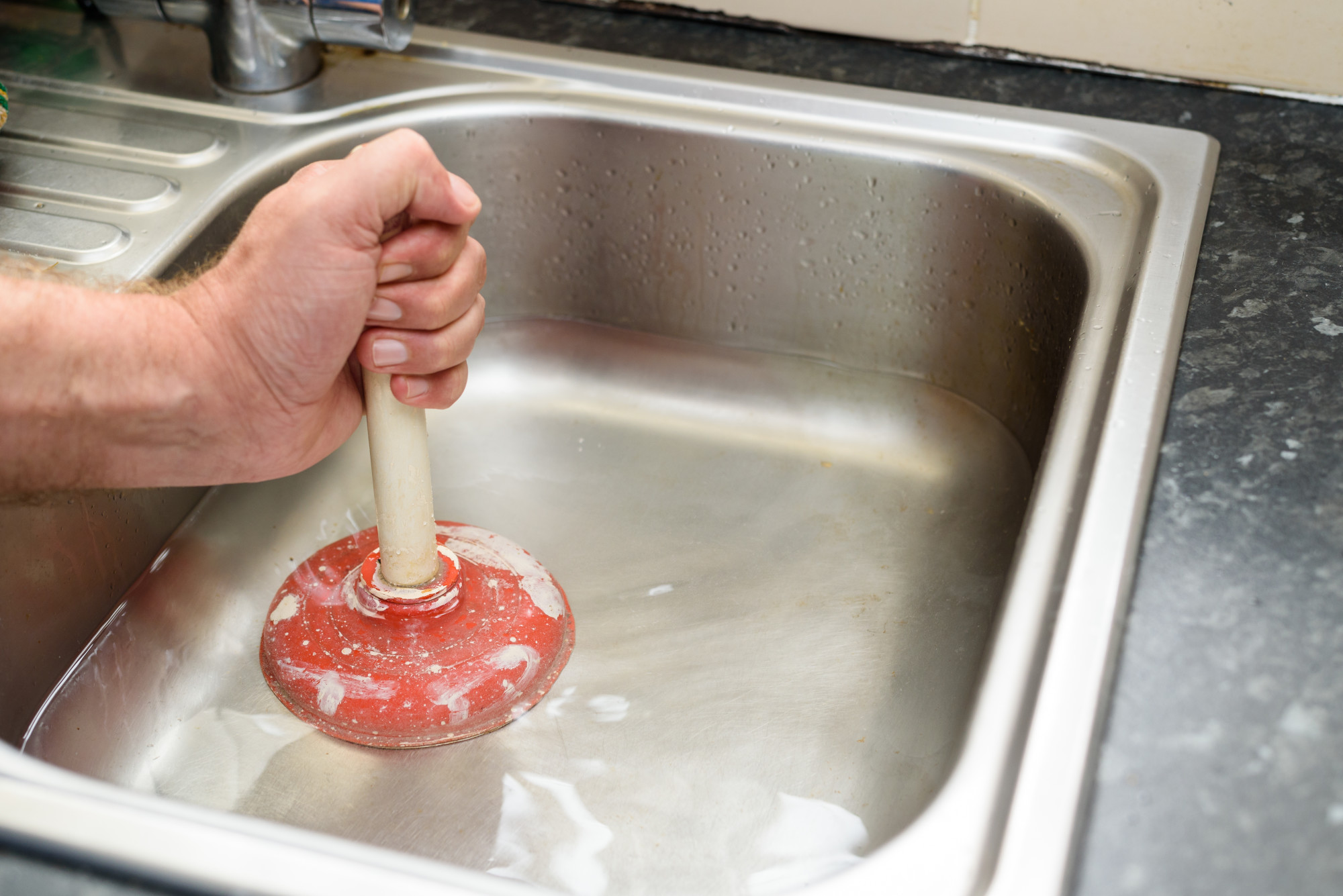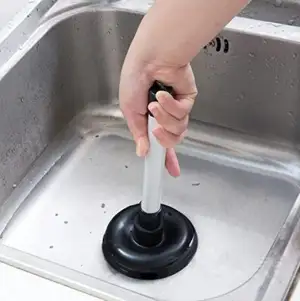How to Successfully Utilize Plunger and Drain Cleaners: Pro Tips
How to Successfully Utilize Plunger and Drain Cleaners: Pro Tips
Blog Article
Listed here on the next paragraphs you can locate more awesome material pertaining to How to Use a Plunger to Unclog a Toilet or Drain.

Introduction
Proper maintenance of household drains pipes is essential for protecting against obstructions and making sure smooth water flow. One of the trick devices in every property owner's toolkit is the bettor, along with different drainpipe cleaners designed to take on stubborn obstructions successfully. This article discovers how to make use of plungers and drain cleansers effectively to maintain your drains flowing freely.
Area 1: Recognizing Plungers
Types of Plungers
There are numerous kinds of plungers offered, each developed for various kinds of drains and blocks. The most common types include cup plungers, flange plungers, and accordion bettors.
How Plungers Job
Plungers deal with the principle of producing pressure and suction to dislodge clogs. When effectively applied over a drain, they produce a vacuum cleaner that can take out particles or separate blockages.
Choosing the Right Plunger
Choosing the best bettor depends on the kind of drainpipe and the nature of the obstruction. Mug bettors are excellent for sinks and tubs, while flange bettors are better suited for toilets due to their design.
Common Mistakes with Plungers
Avoiding these mistakes guarantees effective plunging: improper seal around the drain, inadequate force, and unclear bordering debris.
Section 2: Making Use Of Plungers Effectively
Prep work
Prior to plunging, guarantee the bettor covers the drain entirely and develops a limited seal. Clear any noticeable debris around the drain opening.
Strategy
Begin with gentle plunging movements to build suction. Increase stress slowly, using a constant rhythm. Repeat as essential until the drainpipe clears.
Troubleshooting Tips
If diving does not work, try readjusting the seal, using oil jelly for a far better seal, or using a different type of plunger.
Area 3: Understanding Drainpipe Cleansers
Kinds Of Drain Cleaning Company
Drain pipes cleansers can be chemical or chemical. Chemical cleansers utilize strong chemicals to dissolve obstructions, while enzymatic cleansers use natural enzymes to break down organic matter.
Exactly How Drain Cleansers Work
Chemical cleaners react with blockages to dissolve them, while enzymatic cleaners break down natural materials like hair and oil without damaging pipelines.
Safety and security Factors to consider
Always put on gloves and eye defense when using chemical drain cleaners. Make sure ample ventilation and adhere to manufacturer instructions very carefully.
Eco-Friendly Alternatives
Think about making use of vinegar and baking soda or enzyme-based cleansers for green choices that are safer for pipelines and the setting.
Section 4: Utilizing Drain Cleansers Effectively
Application Methods
Put chemical cleansers straight right into the drain opening. Enable them to work for the suggested time prior to purging with warm water. Chemical cleansers should sit overnight.
Preventative measures
Avoid blending various kinds of cleansers, as this can generate poisonous fumes. Never ever use chemical cleaners combined with a bettor, as splashing can happen.
Taking Care Of Stubborn Obstructions
For relentless obstructions, take into consideration using a pipes serpent or calling a specialist plumbing professional to prevent damage to pipes.
Verdict
Finally, comprehending just how to utilize plungers and drainpipe cleaners efficiently is necessary for preserving healthy and balanced plumbing systems. By picking the right tools and techniques, property owners can deal with small clogs and avoid significant plumbing concerns down the line.
How To Properly Use A Plumbing Snake To Clear Drains
When any drain clogs in our home arise, we tend to gravitate toward the plunger and little else. In cases where the plunger and its vacuum-created pressure are not able to clear clogs, many immediately move to harmful chemicals or simply call their plumber to fix the issue.
we’re happy to help with all drain cleaning needs and concerns. This includes informing you on a few other home remedies you may have at your disposal for minor to moderate clogs, one of which is the use of a plumbing snake. Many people have never used one of these before – let’s go over the steps to take when your drain clogs and you have a plumbing snake available.
Attempt Plunger Use
The first step here, as we noted above, should indeed be to grab your plunger when you notice a drain clog and attempt to resolve it this way. If you’re unsure how to use a particular type of plunger, our plumbers can answer any questions you have. If this doesn’t do the trick, however, you move on to the snake.
Locate And Prepare Snake
A plumbing snake is a metal or plastic device that’s generally about a quarter of an inch thick. It’s design with significant extensions, meant to reach down into your clogged drain and push the clog out. Snakes also contain drain augers that will latch onto and push stubborn blockages.
If your plunger doesn’t clear a clog, locate your snake and bring it to the drain in question. We also recommend keeping a bucket nearby to collect the clog once you pull it out, plus we’d advise wearing goggles and possibly protective gloves.
Feed Snake
Once you’re ready to go, feed the snake slowly down the drain, using the crank device it comes with to keep it moving until it finds the clog. Once this happens, much of the clog will be latched onto the coil so you can pull it out, while the rest will simply break up and flow downward.
Detach Debris
Remove the snake slowly from the drain, and once you’ve done so, pick off any debris that’s stuck to the coil. This is another area where wearing gloves is a must.
Flush Drain
Finally, take a few minutes to ensure the snake has done its job correctly. If you’ve been using it on a toilet, flush the toilet a couple times and make sure everything flows well. If you’ve used it on a different drain, flush it with some room temperature water.
https://www.mybuddytheplumber.com/blog/how-to-properly-use-a-plumbing-snake-to-clear-drains/

Application Methods
Put chemical cleansers straight right into the drain opening. Enable them to work for the suggested time prior to purging with warm water. Chemical cleansers should sit overnight.
Preventative measures
Avoid blending various kinds of cleansers, as this can generate poisonous fumes. Never ever use chemical cleaners combined with a bettor, as splashing can happen.
Taking Care Of Stubborn Obstructions
For relentless obstructions, take into consideration using a pipes serpent or calling a specialist plumbing professional to prevent damage to pipes.
Verdict
Finally, comprehending just how to utilize plungers and drainpipe cleaners efficiently is necessary for preserving healthy and balanced plumbing systems. By picking the right tools and techniques, property owners can deal with small clogs and avoid significant plumbing concerns down the line.
How To Properly Use A Plumbing Snake To Clear Drains
When any drain clogs in our home arise, we tend to gravitate toward the plunger and little else. In cases where the plunger and its vacuum-created pressure are not able to clear clogs, many immediately move to harmful chemicals or simply call their plumber to fix the issue.
we’re happy to help with all drain cleaning needs and concerns. This includes informing you on a few other home remedies you may have at your disposal for minor to moderate clogs, one of which is the use of a plumbing snake. Many people have never used one of these before – let’s go over the steps to take when your drain clogs and you have a plumbing snake available.
Attempt Plunger Use
The first step here, as we noted above, should indeed be to grab your plunger when you notice a drain clog and attempt to resolve it this way. If you’re unsure how to use a particular type of plunger, our plumbers can answer any questions you have. If this doesn’t do the trick, however, you move on to the snake.
Locate And Prepare Snake
A plumbing snake is a metal or plastic device that’s generally about a quarter of an inch thick. It’s design with significant extensions, meant to reach down into your clogged drain and push the clog out. Snakes also contain drain augers that will latch onto and push stubborn blockages.
If your plunger doesn’t clear a clog, locate your snake and bring it to the drain in question. We also recommend keeping a bucket nearby to collect the clog once you pull it out, plus we’d advise wearing goggles and possibly protective gloves.
Feed Snake
Once you’re ready to go, feed the snake slowly down the drain, using the crank device it comes with to keep it moving until it finds the clog. Once this happens, much of the clog will be latched onto the coil so you can pull it out, while the rest will simply break up and flow downward.
Detach Debris
Remove the snake slowly from the drain, and once you’ve done so, pick off any debris that’s stuck to the coil. This is another area where wearing gloves is a must.
Flush Drain
Finally, take a few minutes to ensure the snake has done its job correctly. If you’ve been using it on a toilet, flush the toilet a couple times and make sure everything flows well. If you’ve used it on a different drain, flush it with some room temperature water.
https://www.mybuddytheplumber.com/blog/how-to-properly-use-a-plumbing-snake-to-clear-drains/

As a keen person who reads about A Guide to Plungers (and How to Use Them), I figured sharing that excerpt was worth the trouble. Don't hesitate to take the time to distribute this blog posting if you enjoyed it. Thanks for being here. Return soon.
Prices & Booking Report this page